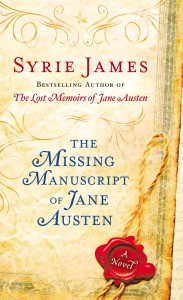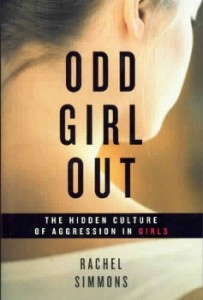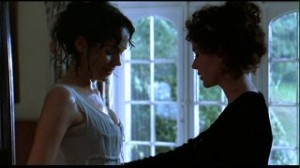
Posts in which we or our guests offer a giveaway.
I love Regency romances and in particular Diane Gaston, Anne Gracie, the earlier Lisa Kleypas …and this debut novel by Laurel Hawkes is amazing in its depth of characterization, its complexity (by that I mean its gritty realism — the ugliness, and beauty, of real life as opposed to the shallow plots found in so many romances), and in the heart-wrenching situation of its heroine and hero. I’d rather not give the plot away, that would be spoiling it– read the blurb!
The winner of an ebook copy of A Promise Of Possibilities by my friend Laurel Hawkes, is…..
Cassandra!!
Which proves you can be last and still be randomly selected.
Cassandra, email me at diane@dianegaston.com and let me know what kind of ebook format you would like. If it is Kindle or Barnes and Noble, it should be easy, but if not, we’ll figure it out!
Thanks to everyone for visiting Risky Regencies!
Diane and the Riskies
I’m thrilled today to welcome Syrie James, one of my favorite Austenesque authors. Syrie is giving away a copy of her latest book, The Missing Manuscript of Jane Austen, to one person who comments today.
S yrie James is the bestselling author of eight critically acclaimed novels, including The Missing Manuscript of Jane Austen, The Lost Memoirs of Jane Austen, The Secret Diaries of Charlotte Brontë, Dracula My Love, Nocturne, Forbidden, and The Harrison Duet: Songbird and Propositions. Her books have been translated into eighteen foreign languages. In addition to her work as a novelist, she is a screenwriter, a member of the Writers Guild of America, and a life member of the Jane Austen Society of North America. She lives with her family in Los Angeles, California. Connect with her on her website, Facebook, and Twitter.
yrie James is the bestselling author of eight critically acclaimed novels, including The Missing Manuscript of Jane Austen, The Lost Memoirs of Jane Austen, The Secret Diaries of Charlotte Brontë, Dracula My Love, Nocturne, Forbidden, and The Harrison Duet: Songbird and Propositions. Her books have been translated into eighteen foreign languages. In addition to her work as a novelist, she is a screenwriter, a member of the Writers Guild of America, and a life member of the Jane Austen Society of North America. She lives with her family in Los Angeles, California. Connect with her on her website, Facebook, and Twitter.
Syrie’s talking about a subject close to the Riskies’ hearts today–research. Take it away, Syrie….
 I had done a great deal of Austen and Regency era research when I wrote my novel The Lost Memoirs of Jane Austen, an education which has been enhanced over the years by additional reading and by JASNA’s many fun and informative conferences and meetings. I’d visited England many times including a wonderful, self-guided Jane Austen tour several years before.
I had done a great deal of Austen and Regency era research when I wrote my novel The Lost Memoirs of Jane Austen, an education which has been enhanced over the years by additional reading and by JASNA’s many fun and informative conferences and meetings. I’d visited England many times including a wonderful, self-guided Jane Austen tour several years before.
To add to that background, I paid great attention to the story structure, character types, character arcs, locations, situations, and themes of Austen’s novels, to ensure that the book would fit within her canon, and be the kind of novel she might have written. I immersed myself in research about life in the Regency era. I pored over the annotated versions of Austen’s novels edited by David M. Shapard, finding valuable information about the world and the language in the annotations themselves. I re-read Jane Austen’s letters again and again, because they are full of a wealth of small details.
The novel also required research into a variety of additional subjects related to specific aspects of the story. I found a friend and Londoner who was kind enough to research obscure facts for me, such as clerical stipends and the cost of nineteenth-century bell forging. She also read the first draft of the manuscript to make sure it didn’t contain any egregious Americanisms.
For the modern day story, I worked with a doctor to hammer out and verify the medical details, such as Mary I. Jesse’s condition, the subplot regarding Samantha’s doctor boyfriend, and the back story regarding her mother’s illness. I worked with a university Special Collections Librarian to understand Samantha’s current occupation, and with an English professor to gain insight into Samantha’s teaching background.
I contacted Oxford University for details regarding their doctoral program. I researched the sales records for the most expensive manuscripts ever sold. I studied the way sales are conducted at Sotheby’s Auction House. And of course I continued to re-read Austen’s novels the entire time I was writing, to keep her voice in my head!
Question of the day–what’s YOUR ideal research trip?
Update: Entries open until Saturday 12 midnight EST.
 Sometimes as a parent, I need to read books like this one: Odd Girl Out: The Hidden Culture of Aggression in Girls by Rachel Simmons, which addresses the covert bullying many girls partake in lieu of more overt, physical bullying which is more common in boys. Simmons explains that in many segments of our society where girls are still expected to be “nice” (while boys are encouraged to be competitive), girls do not develop healthy ways to be competitive or healthy and straightforward strategies for resolving conflicts. Instead, they develop alternative forms of aggression: manipulative “friendships”, shunning, gossip, etc.., often carried out under a veneer of “niceness”.
Sometimes as a parent, I need to read books like this one: Odd Girl Out: The Hidden Culture of Aggression in Girls by Rachel Simmons, which addresses the covert bullying many girls partake in lieu of more overt, physical bullying which is more common in boys. Simmons explains that in many segments of our society where girls are still expected to be “nice” (while boys are encouraged to be competitive), girls do not develop healthy ways to be competitive or healthy and straightforward strategies for resolving conflicts. Instead, they develop alternative forms of aggression: manipulative “friendships”, shunning, gossip, etc.., often carried out under a veneer of “niceness”.
Although many of the cases described are saddening, Simmons doesn’t demonize the aggressors, pointing out that roles often change and that the aggressors’ behavior is rooted in insecurity and the fear of being excluded themselves. There is a high price paid by those who are part of the “in” clique.
On a personal level, I found Simmons’s insights useful, along with some of her suggestions for parents and schools. It also shed some light on behaviors I’ve seen in adult groups that are predominantly female. Not everyone outgrows this stuff.
As a writer, I also found the book interesting in light of fiction and character development.
 Diane’s recent post, Mansfield Park Revisited had me thinking about how Jane Austen depicted alternative female aggression in her books. Clearly, it’s not a new phenomenon. Ladies of the gentry and aristocracy were certainly expected to be “nice” so alternative aggression likely flourished. One can see it in the relationship between Caroline Bingley and Jane Bennett in Pride and Prejudice, in the friendship of Catherine and Isabella in Northanger Abbey and definitely between Fanny and Mary in Mansfield Park.
Diane’s recent post, Mansfield Park Revisited had me thinking about how Jane Austen depicted alternative female aggression in her books. Clearly, it’s not a new phenomenon. Ladies of the gentry and aristocracy were certainly expected to be “nice” so alternative aggression likely flourished. One can see it in the relationship between Caroline Bingley and Jane Bennett in Pride and Prejudice, in the friendship of Catherine and Isabella in Northanger Abbey and definitely between Fanny and Mary in Mansfield Park.
Here’s an image from the infamous scene with lesbian undertones in the 1999 version of Mansfield Park. Although I’ll agree with critics that I never saw anything like that in the book, it does fit in with the model of manipulation, the pressure for the victim to tolerate behavior that makes her uncomfortable, with the underlying threat of loss of friendship.
My second full length Regency romance, The Incorrigible Lady Catherine, was the beginning of my “Three Disgraces” trilogy with heroines who met at boarding school and who, for various reasons, didn’t fit in and formed their own defensive alliance. So I’ve played with this issue before in my writing, although at the time of writing, I certainly didn’t understand the aggressors as well as Jane Austen must have.
Have you read other books, romance or not, where the concept of alternative aggression was used effectively?
 To celebrate the recent release of The Incorrigible Lady Catherine in paperback, I’ll give away one copy to a random commenter. Comment by next Thursday (1/17) and I will announce the winner on Friday (1/18).
To celebrate the recent release of The Incorrigible Lady Catherine in paperback, I’ll give away one copy to a random commenter. Comment by next Thursday (1/17) and I will announce the winner on Friday (1/18).